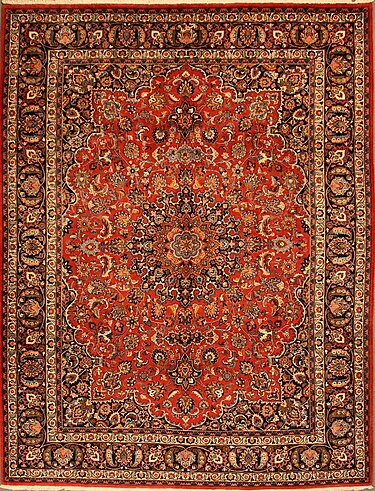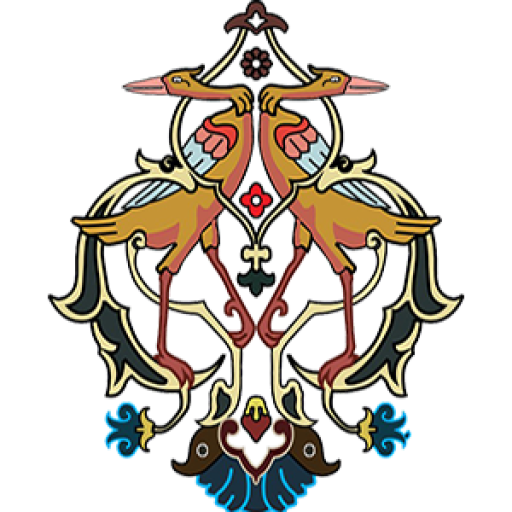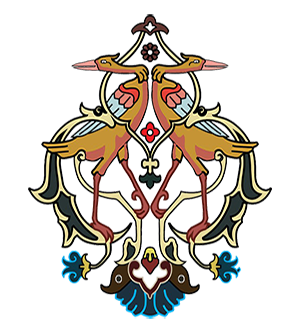The Soul of Persia’s Moving Heritage
To speak of tribal and nomadic rugs is to step into the living poetry of Iran. These are not merely woven floor coverings; they are tactile narratives—ancient stories of migration, memory, and survival captured in knots and wool. From the sun-scorched mountains of Baluchistan to the high plains of Kurdistan, from the southern grasslands of the Qashqai to the rolling pastures of the Turkmen tribes, each rug carries the scent of firewood, the rhythm of hooves, and the heartbeat of a culture in motion.
More Than Just Rugs
These rugs are humble in their origin yet monumental in cultural significance. They are born from the fingertips of women and men whose lives follow the arc of nature and seasons—those who carry their looms with them, knot by knot, across landscapes unchanged for centuries. Tribal and nomadic rugs are among the purest expressions of authenticity in Persian art, untouched by mass production and driven by intimate, ancestral creativity.
Who Weaves the Legacy? – A Journey Through the Tribes
Persian tribal rugs are the legacy of diverse ethnic groups that have inhabited the Iranian plateau for centuries. Each tribe has its own symbols, patterns, color language, and way of life.
Each of these tribes has contributed to the immense diversity and cultural wealth that define the nomadic weaving tradition of Iran.
Materials and Craftsmanship: Earth, Hand, and Time
Most tribal and nomadic rugs are made from handspun wool, sourced from the sheep raised by the weavers themselves. The wool is washed, carded, spun, and dyed using organic materials—pomegranate skins, walnut husks, indigo, madder root, or turmeric, depending on what the land provides.
The looms are horizontal and portable, placed on the ground and designed to be moved as the tribe moves. This impermanence gives the rugs a unique freedom—both technically and creatively. Knots may not be perfectly aligned; borders may not be symmetrical; but therein lies their beauty. Each piece is infused with the personality and rhythm of its creator.
Knots per square inch (KPSI) may vary greatly—from rougher 30 KPSI pieces to more refined weaves with up to 80 KPSI—but in tribal rugs, knot count is never the sole indicator of value. Texture, spontaneity, color balance, and symbolic depth matter more.
Additionally, Tehran’s carpet industry has positively impacted related industries such as dyeing, leatherwork, and the production of weaving tools and machinery.
Design Language: Symbols, Spirit, and Spontaneity
Geometric Medallions
Often arranged in vertical symmetry or diamond shapes, symbolizing protection, fertility, or spiritual balance.
Animals & Birds
Stylized representations of camels, horses, lions, and peacocks—often indicating strength, freedom, or prosperity.Trees & Flowers
Woven gardens, symbolic of paradise, growth, and the transitory beauty of life.Tent Motifs & Migration Lines
Reflecting the daily life of the nomad—movement, family, and shelter.
Unlike urban carpets where weavers follow precise blueprints, tribal rugs are often woven from memory and emotion. A grandmother’s motif is passed down through storytelling, not sketching.
Tribal vs. City Rugs: Imperfection as Perfection
Urban Persian rugs—like those of Tabriz, Isfahan, or Qom—are celebrated for their precision, symmetry, and ornate detail. They are masterpieces of planning.
Tribal rugs, by contrast, are masterpieces of feeling. They’re asymmetrical, instinctive, bold. They reflect lives lived in tents and under stars, not behind walls. Their imperfections are deliberate and sacred, like the wabi-sabi of the Persian landscape.
These rugs do not strive to be flawless—they strive to be alive.
The Cultural and Spiritual Value
To own a tribal rug is to own a fragment of a people’s soul. These rugs have historically marked:
-
Weddings (woven as dowries or gifts)
-
Births (special celebratory patterns)
-
Seasonal migrations (woven during or after specific routes)
-
Spiritual practices (used as prayer rugs or sacred floorings)
They are woven not just with wool, but with memory—each knot a breath, each pattern a prayer.
Many of these rugs never made it to market. They were kept inside the homes of the tribes or exchanged as symbols of trust. Only a limited number ever reach collectors or connoisseurs.
Why They Matter Now More Than Ever
In a world increasingly dominated by uniformity and automation, tribal rugs remind us of the human hand, the hand that creates, records, and preserves.
-
Aesthetic uniqueness
-
Sustainability (natural materials, ethical production)
-
Storytelling (each rug is non-repeatable)
-
Cultural connection (living links to ancient traditions)
They are both art and anthropology.
Our Collection: Curated with Purpose
We take pride in offering a handpicked selection of genuine tribal and nomadic rugs sourced directly from Iran’s tribal regions. Every piece in our collection is:
-
Authentic
-
Ethically sourced
-
Evaluated for age, symbolism, and condition
-
Accompanied by detailed provenance
Whether you are a seasoned collector or a first-time admirer, here you’ll find more than rugs—you’ll find stories you can stand on.
The Soul of Persia’s Moving Heritage
To speak of tribal and nomadic rugs is to step into the living poetry of Iran. These are not merely woven floor coverings; they are tactile narratives—ancient stories of migration, memory, and survival captured in knots and wool. From the sun-scorched mountains of Baluchistan to the high plains of Kurdistan, from the southern grasslands of the Qashqai to the rolling pastures of the Turkmen tribes, each rug carries the scent of firewood, the rhythm of hooves, and the heartbeat of a culture in motion.
More Than Just Rugs
These rugs are humble in their origin yet monumental in cultural significance. They are born from the fingertips of women and men whose lives follow the arc of nature and seasons—those who carry their looms with them, knot by knot, across landscapes unchanged for centuries. Tribal and nomadic rugs are among the purest expressions of authenticity in Persian art, untouched by mass production and driven by intimate, ancestral creativity.
Who Weaves the Legacy? – A Journey Through the Tribes
Persian tribal rugs are the legacy of diverse ethnic groups that have inhabited the Iranian plateau for centuries. Each tribe has its own symbols, patterns, color language, and way of life.
Each of these tribes has contributed to the immense diversity and cultural wealth that define the nomadic weaving tradition of Iran.
Materials and Craftsmanship: Earth, Hand, and Time
Most tribal and nomadic rugs are made from handspun wool, sourced from the sheep raised by the weavers themselves. The wool is washed, carded, spun, and dyed using organic materials—pomegranate skins, walnut husks, indigo, madder root, or turmeric, depending on what the land provides.
The looms are horizontal and portable, placed on the ground and designed to be moved as the tribe moves. This impermanence gives the rugs a unique freedom—both technically and creatively. Knots may not be perfectly aligned; borders may not be symmetrical; but therein lies their beauty. Each piece is infused with the personality and rhythm of its creator.
Knots per square inch (KPSI) may vary greatly—from rougher 30 KPSI pieces to more refined weaves with up to 80 KPSI—but in tribal rugs, knot count is never the sole indicator of value. Texture, spontaneity, color balance, and symbolic depth matter more.
Additionally, Tehran’s carpet industry has positively impacted related industries such as dyeing, leatherwork, and the production of weaving tools and machinery.
Design Language: Symbols, Spirit, and Spontaneity
Geometric Medallions
Often arranged in vertical symmetry or diamond shapes, symbolizing protection, fertility, or spiritual balance.
Animals & Birds
Stylized representations of camels, horses, lions, and peacocks—often indicating strength, freedom, or prosperity.Trees & Flowers
Woven gardens, symbolic of paradise, growth, and the transitory beauty of life.Tent Motifs & Migration Lines
Reflecting the daily life of the nomad—movement, family, and shelter.
Unlike urban carpets where weavers follow precise blueprints, tribal rugs are often woven from memory and emotion. A grandmother’s motif is passed down through storytelling, not sketching.
Tribal vs. City Rugs: Imperfection as Perfection
Urban Persian rugs—like those of Tabriz, Isfahan, or Qom—are celebrated for their precision, symmetry, and ornate detail. They are masterpieces of planning.
Tribal rugs, by contrast, are masterpieces of feeling. They’re asymmetrical, instinctive, bold. They reflect lives lived in tents and under stars, not behind walls. Their imperfections are deliberate and sacred, like the wabi-sabi of the Persian landscape.
These rugs do not strive to be flawless—they strive to be alive.
The Cultural and Spiritual Value
To own a tribal rug is to own a fragment of a people’s soul. These rugs have historically marked:
-
Weddings (woven as dowries or gifts)
-
Births (special celebratory patterns)
-
Seasonal migrations (woven during or after specific routes)
-
Spiritual practices (used as prayer rugs or sacred floorings)
They are woven not just with wool, but with memory—each knot a breath, each pattern a prayer.
Many of these rugs never made it to market. They were kept inside the homes of the tribes or exchanged as symbols of trust. Only a limited number ever reach collectors or connoisseurs.
Why They Matter Now More Than Ever
In a world increasingly dominated by uniformity and automation, tribal rugs remind us of the human hand, the hand that creates, records, and preserves.
-
Aesthetic uniqueness
-
Sustainability (natural materials, ethical production)
-
Storytelling (each rug is non-repeatable)
-
Cultural connection (living links to ancient traditions)
They are both art and anthropology.
Our Collection: Curated with Purpose
We take pride in offering a handpicked selection of genuine tribal and nomadic rugs sourced directly from Iran’s tribal regions. Every piece in our collection is:
-
Authentic
-
Ethically sourced
-
Evaluated for age, symbolism, and condition
-
Accompanied by detailed provenance
Whether you are a seasoned collector or a first-time admirer, here you’ll find more than rugs—you’ll find stories you can stand on.







